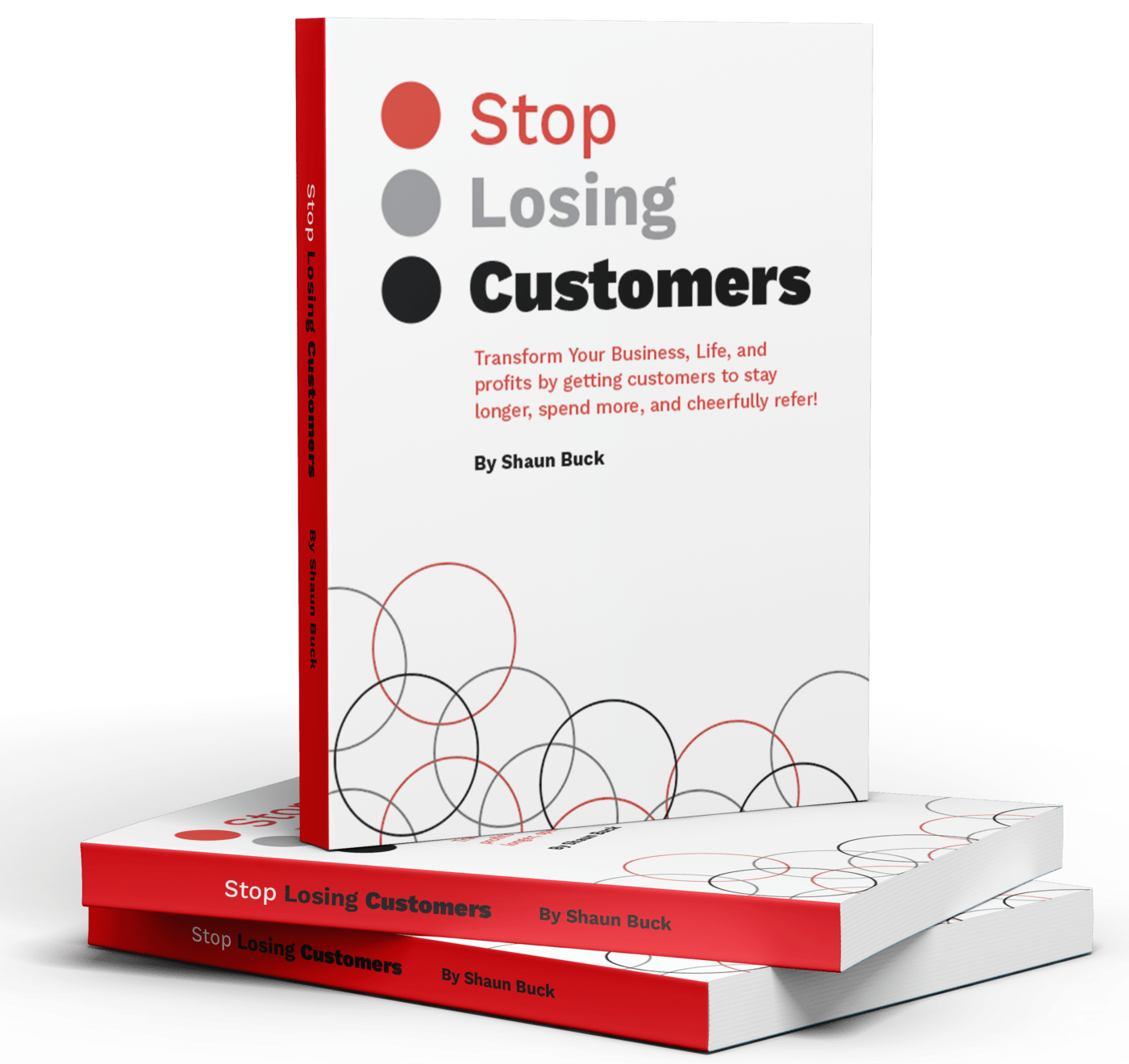Email marketing, often overshadowed by the flashier realms of social media and SEO, holds its ground with unmatched precision and personalization. This underappreciated powerhouse in the digital marketing arsenal shines through its direct line to potential customers, offering a tailored experience that sets it apart from broader marketing strategies. At the heart of email marketing’s effectiveness are key metrics, each serving as a beacon to guide strategies and refine approaches.
Open Rate, Click-Through Rate (CTR), Conversion Rate, Bounce Rate, Unsubscribe Rate, List Growth Rate, Email Sharing/Forwarding Rate, and Overall ROI stand as the pillars supporting the architecture of a successful email campaign. Each metric, from the initial open to the final conversion, narrates a part of the story, revealing insights into audience engagement and content resonance. Digging deeper, we’ll explore the nuances behind these metrics, from the technicalities of measuring engagement to the strategic implications of each number.
This exploration will provide a comprehensive understanding of how to leverage data to craft email campaigns that not only reach inboxes but also resonate with recipients, driving action and fostering connections. Through this lens, we’ll see how email marketing, with its blend of art and science, continues to be a pivotal element of digital marketing strategies.
What is Email Marketing Metrics
Email marketing metrics are the navigational tools used by email marketers to steer through the complex landscape of digital communication. These metrics provide quantifiable insights into the performance of email campaigns, illuminating aspects of recipient behavior and the overall effectiveness of each campaign. From the initial dispatch of an email to the recipient’s actions upon receiving it, these metrics meticulously track the email’s journey, offering valuable data that guides strategic decisions and adjustments.
Understanding and utilizing these metrics is essential for marketers aiming to optimize their email campaigns, ensuring that messages not only reach their intended audiences but also resonate and drive the desired actions. By evaluating key metrics such as the Open Rate—the percentage of emails opened—to the Overall ROI—the financial effectiveness of email marketing efforts—marketers can lay a solid foundation for successful and impactful email marketing strategies. Through these metrics, email marketing transcends mere communication, becoming a powerful tool for engagement and conversion.
Why Monitor Email Marketing Metrics
Monitoring email marketing metrics is crucial for understanding the heartbeat of your email campaigns. This process goes beyond merely sending out communications; it’s about ensuring those emails fulfill their intended purpose—whether to inform, engage, or convert. By closely observing these metrics, marketers unlock insights into what content truly resonates with their audience, identify areas for improvement, and discern which strategies yield the highest return on investment (ROI).
Engaging in this vigilant monitoring facilitates real-time adjustments and strategic shifts, making each campaign more informed and effective than its predecessors. It’s about nurturing a relationship with your audience, one email at a time, using metrics as the feedback loop that guides this journey. From enhancing content relevance to boosting overall campaign efficacy, the act of monitoring these metrics is key to leveraging the full power of email marketing.
Essentially, it turns raw data into actionable insights, empowering marketers to create campaigns that not only reach inboxes but also resonate on a deeper level, touching hearts and minds.
Examples of Actionable Insights from Metrics
- Open Rate Insights: A sudden drop in the Open Rate could indicate that your email subject lines are not resonating with your audience. For example, if an e-commerce brand notices a decline in Open Rates after changing their subject line strategy to include price discounts, it might signal that their audience values product benefits or exclusivity more than discounts. This insight could prompt a review and revision of subject line strategies to focus more on the unique value or exclusivity of products rather than just price cuts.
- Unsubscribe Rate Insights: An increase in the Unsubscribe Rate could highlight issues with content relevance or email frequency. For instance, a newsletter that shifts its content focus from industry news to more promotional content might see an uptick in unsubscribes, suggesting that their audience prefers educational content over sales pitches. This feedback can lead to a realignment of content strategy to include more educational articles, case studies, or industry insights.
By monitoring these metrics and understanding the story they tell, marketers can make informed decisions to enhance their email marketing strategies. Adjusting content based on Open Rate feedback or revising email frequency in response to Unsubscribe Rate trends are just a couple of examples of how data can drive strategic improvements.
Open Rate
The Open Rate is a pivotal metric in the realm of email marketing, serving as the first gauge of initial engagement. It quantifies the percentage of recipients who open a specific email, providing insights into the allure of an email’s subject line and its capacity to grab the audience’s attention. A robust Open Rate indicates that the email content is sufficiently relevant and compelling, encouraging recipients to engage further.
This metric is essential for marketers striving to assess the immediate resonance of their email campaigns and to refine their strategies for capturing audience interest from the get-go. By meticulously analyzing Open Rates, marketers can tailor their approach to ensure their messages not only reach but also captivate, amidst the crowded digital landscape. It underscores the importance of crafting messages that resonate, making it a fundamental measure for optimizing email campaign effectiveness.
Definition: Percentage of emails opened
The Open Rate is quantified as the percentage of emails that are opened by recipients, relative to the total number of emails dispatched. This metric is a key indicator of an email’s initial appeal to its audience, primarily reflecting the success of the subject line in encouraging recipients to engage with the content.
Importance: Measures initial engagement
The significance of the Open Rate stems from its role in measuring the initial engagement with email content. It offers an early glimpse into the effectiveness of your email marketing efforts, indicating how well your messages are resonating with recipients at their first point of interaction. A higher Open Rate signals that your emails are not only reaching inboxes but are also compelling enough to prompt immediate action, laying the groundwork for further engagement and potential conversions.
Click-Through Rate (CTR)
The Click-Through Rate (CTR) stands as a vital metric within the sphere of email marketing, quantifying the percentage of email recipients who click on one or more links present in an email. This measure extends the concept of engagement further, evaluating how compelling and pertinent your email content is to your audience. A notable CTR signifies that the email did not just capture the recipient’s eye but also effectively encouraged them to take a specific action, reflecting a robust alignment between the content and the recipient’s interests or needs.
The CTR is instrumental in assessing the success of email content, call-to-action elements, and the overarching campaign architecture. Through careful examination of CTR, marketers can uncover what prompts their audience to move beyond mere interest to actual engagement, enabling the fine-tuning of content and strategies to enhance the efficacy of future campaigns.
Definition: Percentage clicking on a link
The Click-Through Rate (CTR) is quantified as the percentage of email recipients who engage by clicking on a link contained within the email. This metric acts as a direct indicator of active interaction with the email content, showing the proportion of the audience that transitions from passive reading to taking an actionable step.
Importance: Gauges content relevance
The critical importance of CTR stems from its role in assessing the relevance and effectiveness of email content. A higher CTR indicates that the content is not only reaching the audience but is also compelling enough to prompt immediate action. This metric serves as a key barometer for the alignment between the email’s message and the recipient’s interests or needs, guiding marketers in refining their strategies to enhance engagement and achieve campaign goals more effectively.
Conversion Rate
The Conversion Rate is a pivotal metric within email marketing, representing the percentage of email recipients who perform a desired action after engaging with a link in the email. These actions, which include making a purchase or registering for an event, signify a profound level of engagement that surpasses mere interest. A robust Conversion Rate indicates that the email content is not only engaging and relevant but also successful in nudging recipients towards the campaign’s ultimate objectives.
It showcases the email’s ability to convert initial interest into concrete actions, marking the definitive measure of an email campaign’s success. This rate is a critical gauge of how effectively email content facilitates the transition from interest to action, underscoring the effectiveness and profitability of email marketing endeavors. By focusing on optimizing the Conversion Rate, marketers can amplify the impact of their campaigns, ensuring they resonate deeply enough to incite significant actions aligned with broader business goals.
Definition: Percentage completing desired action
The Conversion Rate is quantified as the percentage of email recipients who complete a desired action subsequent to clicking on a link within the email. This critical metric measures the capacity of email content to not only engage but also to effectively persuade recipients to undertake specific, goal-aligned actions.
Importance: Key profitability indicator
The paramount importance of the Conversion Rate stems from its role as a key indicator of profitability and the overarching success of email marketing campaigns. A heightened Conversion Rate signifies that the campaign transcends mere interest, actively compelling recipients towards actions that directly contribute to the organization’s financial objectives. It is indispensable for assessing the true effectiveness of email marketing initiatives, providing marketers with the insights needed to refine their strategies and optimize the return on investment (ROI).
Bounce Rate
The Bounce Rate in email marketing signifies the percentage of emails that fail to successfully reach the recipient’s inbox. This metric is bifurcated into Hard Bounce and Soft Bounce. A Hard Bounce reflects permanent issues, such as an invalid or non-existent email address, while a Soft Bounce is indicative of temporary delivery challenges, like a full inbox or server downtime.
A heightened Bounce Rate may highlight concerns with the email list’s integrity or with the email delivery setup, which can adversely affect the campaign’s reach and efficacy. Diligently monitoring and actively working to reduce the Bounce Rate is vital for sustaining a robust email list and guaranteeing that marketing communications are effectively delivered. Addressing the root causes of bounces enables marketers to enhance email deliverability and optimize the overall performance of their email marketing campaigns.
Hard Bounce: Email address invalid
A Hard Bounce signifies a situation where an email cannot be delivered due to the recipient’s email address being invalid or non-existent. This permanent issue often results from outdated or inaccurately entered information within the email list.
Soft Bounce: Temporary delivery issues
Conversely, a Soft Bounce indicates temporary delivery challenges, such as a recipient’s mailbox being at capacity or encountering server difficulties. These issues are generally resolvable, paving the way for future successful email deliveries.
Importance: Email list health indicator
The overall Bounce Rate, which includes both Hard and Soft Bounces, serves as a vital health indicator for an email list and the efficacy of email delivery mechanisms. Maintaining a low Bounce Rate is crucial, as it reflects a well-curated, accurate email list and a robust delivery system—key components for optimizing the reach and effectiveness of email marketing initiatives. Proactively monitoring and mitigating bounce-related issues can significantly enhance engagement with the intended audience, bolstering the success of email marketing strategies.
Actions to Address Bounce Rates
To provide specific actions based on the types of bounces, the following table outlines detailed strategies:
| Bounce Type | Description | Recommended Action |
|---|---|---|
| Hard Bounce | Email address invalid or non-existent. | – Immediately remove these addresses from your list to maintain list health. – Regularly validate email addresses upon collection to prevent future Hard Bounces. |
| Soft Bounce | Temporary delivery issues (full inbox, server issues). | – Monitor these addresses for repeated Soft Bounces. – If Soft Bounces persist, consider removing them or reaching out to update contact information. – Adjust email size and content to ensure compatibility with recipient servers. |
By implementing these actions, marketers can effectively manage and reduce their Bounce Rates, enhancing the deliverability and effectiveness of their email marketing campaigns.
Unsubscribe Rate
The Unsubscribe Rate is a critical metric within email marketing, indicating the percentage of recipients who decide to stop receiving emails. This rate offers insight into the audience’s perception of your content’s relevance and engagement level. Although a minimal amount of unsubscribes is to be expected, a high Unsubscribe Rate may highlight a misalignment between the content being delivered and the recipients’ expectations or interests.
It acts as valuable feedback, urging marketers to revisit and refine their content strategies, audience segmentation, and overall communication methods. Maintaining a low Unsubscribe Rate is pivotal for preserving a vibrant, engaged email list and ensuring the sustained effectiveness of email marketing efforts. By diligently monitoring this metric, marketers can implement strategic adjustments to boost content appeal and keep subscriber engagement high.
Definition: Percentage opting out of emails
The Unsubscribe Rate is quantified as the percentage of recipients opting to discontinue receiving future emails. This metric highlights the frequency at which subscribers decide to withdraw from the email list, offering a clear indicator of how well the email content resonates with the audience’s interests and engagement desires.
Importance: Feedback on content relevance
The critical importance of the Unsubscribe Rate stems from its role as direct feedback on the relevance and attractiveness of the email content. An elevated Unsubscribe Rate suggests a disconnect between the content’s value and the audience’s expectations, underscoring the necessity for strategic adjustments in content delivery or audience segmentation. Keeping a close watch on this rate is vital for upholding the quality of content and ensuring it aligns with subscriber preferences, thereby influencing the effectiveness and longevity of email marketing efforts.
List Growth Rate
The List Growth Rate is a pivotal metric in email marketing, signifying the pace at which an email list expands over a given period. It calculates the net increase in subscribers by subtracting the number of unsubscribes and list cleanups from new sign-ups. A positive growth rate not only denotes growing brand interest but also underscores the success of strategies aimed at acquiring new subscribers.
On the flip side, a list that’s not growing or, worse, shrinking, may point towards the need for a fresh approach in marketing or audience engagement tactics. Keeping an eye on the List Growth Rate offers marketers valuable insights into the evolving preferences of their audience and the vitality of their email marketing endeavors. Emphasizing this metric allows businesses to fine-tune their strategies for attracting and maintaining subscriber interest, thereby securing the long-term prosperity of their email marketing initiatives.
Definition: Net subscriber growth over time
The List Growth Rate is quantified as the net increase in subscribers within a designated timeframe, reflecting the dynamic balance between incoming subscribers and those who unsubscribe or are removed during list maintenance. This metric offers a clear snapshot of the email list’s expansion, showcasing the evolving interest in the brand’s content and its resonance with a broader audience.
Importance: Indicator of brand interest
The significance of the List Growth Rate extends beyond mere numbers; it acts as a crucial indicator of brand interest and the effectiveness of email marketing strategies. A positive growth rate is a testament to the brand’s growing appeal and its ability to captivate and retain new subscribers. It highlights the success of current marketing tactics in engaging and expanding the audience base.
Conversely, a static or declining growth rate prompts a critical evaluation of engagement and acquisition methods, pushing for innovative approaches to bolster the brand’s connection with potential subscribers.
Email Sharing/Forwarding Rate
The Email Sharing/Forwarding Rate is an essential metric that captures the percentage of recipients who take the initiative to share the email content with others or forward it to different email addresses. This rate acts as a compelling indicator of the content’s relevance, value, and appeal to the audience. When recipients share or forward an email, it suggests that the content not only resonates with them but also possesses qualities worth spreading, effectively extending the email campaign’s reach and influence beyond the initial recipient list.
A high sharing and forwarding rate underscores the content’s potential for virality and stands as a testament to the campaign’s quality and engagement level. Monitoring the Email Sharing/Forwarding Rate provides marketers with valuable insights into the social proof and word-of-mouth impact of their email initiatives, empowering them to leverage organic reach to enhance overall campaign performance.
Definition: Percentage sharing your email
The Email Sharing/Forwarding Rate is quantified as the percentage of recipients who actively share or forward your email content to others. This metric effectively measures the dissemination of your email beyond the initial audience, showcasing the content’s ability to engage and inspire recipients to extend its reach voluntarily.
Importance: Measures content virality
The critical importance of the Email Sharing/Forwarding Rate emerges from its role in assessing the virality of email content. A heightened sharing and forwarding rate signals that the content is not merely engaging but also possesses a compelling quality that encourages recipients to share it within their networks, thereby significantly expanding its reach and influence. This rate is a pivotal indicator of content relevance, appeal, and its potential to foster organic growth and broader exposure, offering valuable insights into the campaign’s resonance with the audience.
Overall ROI
The Overall ROI (Return on Investment) is a fundamental metric in the realm of email marketing, encapsulating the financial effectiveness of email campaigns. It assesses the profitability generated from email marketing activities in comparison to the costs incurred. A positive ROI signifies that the email campaigns are effectively engaging the target audience and driving financially beneficial actions.
This metric is invaluable for marketers aiming to gauge the direct contribution of their email strategies to the company’s financial health. By closely analyzing the Overall ROI, businesses can strategically allocate resources and refine their email marketing approaches to boost profitability. It acts as a holistic measure of success and efficiency, offering insights that guide the optimization of campaign performance for enhanced financial returns.
Definition: Return on investment for campaigns
The Overall ROI represents the return on investment achieved through email marketing campaigns. It quantifies the financial returns relative to the investment made in email marketing activities, offering a precise measure of profitability and campaign efficiency.
Importance: Financial effectiveness of email marketing
The significance of the Overall ROI stems from its role in evaluating the financial effectiveness of email marketing endeavors. A favorable ROI indicates successful engagement and conversion strategies, highlighting that the campaigns are not just reaching the audience but also compelling them towards profitable actions. This metric is essential for marketers seeking to demonstrate the value of their email marketing strategies in contributing to the organization’s financial goals.
It informs strategic decisions regarding resource allocation and campaign refinement, aiming to enhance the financial outcomes of email marketing efforts.
Campaign Comparison
Campaign Comparison is a critical tactic in email marketing that entails the detailed analysis and juxtaposition of various email campaign performances. By scrutinizing key metrics such as Open Rate, Click-Through Rate (CTR), Conversion Rate, and Overall ROI, marketers can pinpoint which campaigns have achieved superior results. This analytical process sheds light on audience behavior patterns, preferences, and trends, offering deep insights into the types of content that garner the most engagement.
Such comparisons are invaluable for refining and enhancing email marketing strategies, spotlighting successful tactics that could be replicated or modified for future initiatives. Moreover, Campaign Comparison plays a pivotal role in optimizing the allocation of marketing resources, ensuring that investment and effort are channeled towards the most fruitful strategies. This practice is instrumental in driving continuous improvement in email marketing effectiveness, leading to better performance outcomes and increased ROI.
Purpose: Identify best performing campaigns
The core aim of Campaign Comparison is to pinpoint the email campaigns that have demonstrated the highest level of performance. This involves a detailed assessment of various campaigns’ ability to captivate and engage the audience, ultimately leading to the desired outcomes. Recognizing the most successful campaigns provides valuable insights into the content and strategies that resonate most powerfully with the target audience.
Method: Analyze metrics across campaigns
To achieve this, the method revolves around a rigorous analysis of critical performance indicators across multiple campaigns. By delving into metrics such as Open Rates, Click-Through Rates, Conversion Rates, and Overall ROI, marketers can obtain a comprehensive understanding of each campaign’s impact. This systematic examination facilitates the discovery of effective strategies and tactics, laying the groundwork for their application or enhancement in future marketing endeavors to ensure continued success.
Campaign Performance Comparison Table
To illustrate the application of campaign comparison, below is a detailed table comparing key metrics across two hypothetical email campaigns:
| Metric | Campaign A | Campaign B | Insights Gained |
|---|---|---|---|
| Open Rate | 20% | 25% | Campaign B’s subject line may be more effective at capturing attention. |
| Click-Through Rate (CTR) | 10% | 15% | Higher CTR in Campaign B suggests more compelling content or call-to-action. |
| Conversion Rate | 5% | 8% | Campaign B’s messaging or offer may be more aligned with the audience’s needs. |
| Overall ROI | 120% | 150% | Campaign B demonstrates higher financial effectiveness, possibly due to better targeting or offer. |
This comparison reveals that Campaign B outperforms Campaign A across all key metrics, suggesting that its strategies in subject line creation, content presentation, and offer alignment are more effective. Marketers can use these insights to refine future campaigns, adopting the successful elements of Campaign B to enhance engagement and profitability.
How to Improve Email Marketing Metrics
Improving email marketing metrics requires a strategic approach that encompasses enhancing content quality, segmenting your audience, personalizing emails, and conducting tests and optimizations. By crafting content that aligns more closely with the audience’s interests and preferences, marketers can significantly elevate engagement levels, from opening rates to click-throughs. Segmenting the audience ensures that emails are finely targeted and relevant, greatly increasing the chances of resonating with recipients.
Personalization efforts, such as incorporating the recipient’s name and tailoring content to their specific interests, further strengthen the bond between the brand and the individual, potentially boosting open and conversion rates. Lastly, testing various elements of email campaigns, from subject lines to calls to action, enables marketers to continuously refine their strategy based on empirical data and performance insights. Together, these tactics forge a path toward more engaging, relevant, and impactful email marketing efforts, leading to marked improvements across all pivotal metrics.
Enhancing Content Quality: Tailor content to audience
Enhancing content quality demands a strategic approach to tailor email content specifically to the audience’s interests and needs. By developing content that resonates on a personal level, marketers can significantly boost engagement, leading to higher open and click-through rates.
Segmenting Your Audience: Target emails based on behavior
Segmenting your audience enhances the precision of email campaigns. By categorizing recipients based on their behavior, demographics, or interaction history, emails can be finely tuned to each segment’s characteristics, increasing the relevance and effectiveness of the marketing communications.
Personalizing Emails: Use recipient’s name and interests
Personalizing emails by incorporating the recipient’s name and aligning content with their interests cultivates a deeper connection. This personalized touch not only enhances the recipient’s experience but also drives higher engagement, potentially elevating open rates and fostering more meaningful interactions.
Testing and Optimization: A/B test subject lines and calls to action
Testing and optimization through A/B testing of subject lines and calls to action is essential for refining email marketing tactics. This method allows marketers to experiment with various elements, gather data on performance, and identify the most impactful strategies, ensuring continuous improvement and maximized effectiveness of campaigns.






